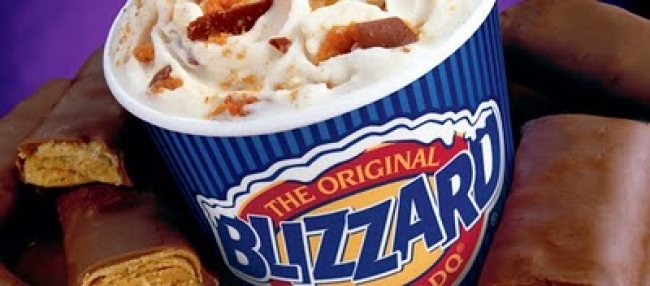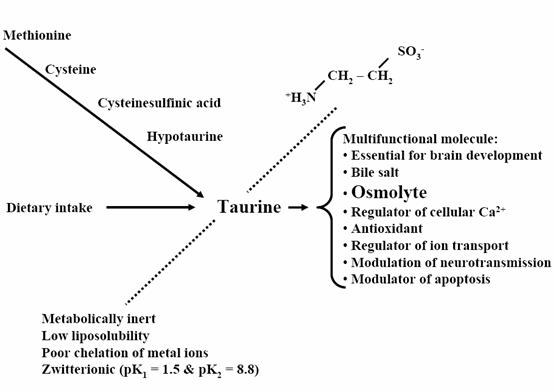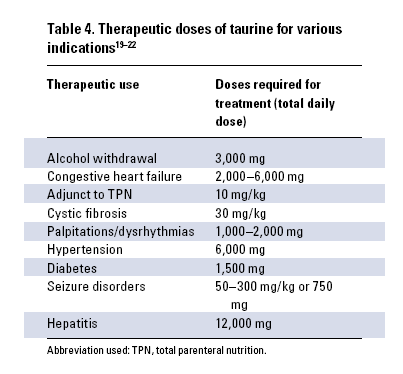Feel like slamming back 5 cups of coffee and 81 grams of sugar? Woowee!! It’s energy drink time! Once you get over the nausea, heart palpitations, insulin whiplash, and chemical toxicity, you’re gonna feel great.
Cocaine. BooKoo. Mother. V. These are just a few of the hundreds of energy drinks now available on the market. Are these names supposed to be amusing? Or just downright disturbing?
What are energy drinks and why are they important?
In 1997, I just passed my driver’s license test. And in the same year Red Bull was introduced in the U.S. Over the next 6 years the sale of energy drinks in the U.S. increased about 465%.
In response, one question that I always ask is this one. Why would somebody need more energy?
I mean, the only time energy levels bottom out is when we skip sleep, skip workouts, and consume pathetic foods. Wait a minute, I just described most of North America. Ok, I guess I do understand why people are drawn to canned pick-me-ups!
Interestingly, the term “energy drink” is not recognized by the FDA or USDA. The details around regulation of these drinks are, well, kind of boring. Except for the following:
- In the U.S., an over-the-counter medication for energy (like No-Doz) containing 100 mg of caffeine must include lots of warnings.
- But the 24 ouncer of “knock your socks off energy beverage” from 7-11 that contains 500 mg of caffeine can be marketed with no warnings.
Energy drinks are now a $3.4 billion per year industry. The U.S. leads the world in total volume sales of energy drinks. In 2006, 31% of teens in the U.S. reported drinking them. We are talking about nearly 8 million teens — who are potentially consuming teeth-rattling amounts of caffeine and sugar.
What you should know about energy drinks
Have you ever heard of Red Bull? In 2002, it commanded about 50% of energy drink revenue. Let’s break down the ingredients. It contains:
- Carbonated water
- Sucrose
- Glucose
- Sodium citrate
- Taurine
- Glucuronolactone
- Caffeine
- Inositol
- B vitamins (B3, B5, B6, B12)
- Flavors and colors
We’ll take them one at a time.
Carbonated water
This is water dissolved with carbon dioxide. Doesn’t do much for energy or health – but it can make you bloated.
Sucrose/glucose
Unless your drink is sugar-free, you will find some form of added sugar. Per 8 ounces, the sugar content is between 20 and 35 grams for most drinks.
Glucose is the major energy source for the brain, red blood cells, and muscles. Consuming glucose with caffeine can enhance concentration. Too much sugar, though, will lead to a big waistline rather than big energy. Oh, and cavities.

Sodium citrate
More commonly known as citric acid. This is a preservative that also provides a tart taste. Lots of it may cause GI upset. And it has been known to erode tooth enamel.
Taurine
This is a sulfur containing amino acid that we can make from methionine and cysteine. It’s found mainly in muscle tissue and can:
- Help to regulate water, mineral & homocysteine levels
- Help contribute to bile acid formation
- Improve muscle contractility and protect against muscle stress in animals.
- Help to prevent atherosclerosis and diabetes mellitus, but results are mixed. Taurine has actually worsened lipid panels in animals.
A dose of nearly 5 grams might be needed to notice any effect. Most energy drinks contain much less.
Consuming taurine from food/supplements seems to have minimal impact on blood levels, yet strangely, it still concentrates in organs and tissues. Taurine is highly water soluble and excreted by the kidneys.

Those who probably shouldn’t experiment with taurine:
- Anyone with kidney disease. It won’t be readily excreted and supplementation can lead to accumulation in tissues (and lots of dizzy spells).
- Anyone who doesn’t like itching. Supplementing taurine can cause itching.
- Those with epilepsy. Supplementing taurine can cause nausea, dizziness, and a headache

Glucuronolactone
This naturally occurring glucose metabolite can help to reduce glycogen breakdown during workouts. It can help improve alertness too. It’s found naturally in very small amounts. Once ingested, it’s transformed in the liver and excreted via urine. That’s about all there is to say about this stuff.
Caffeine
90% of us (in the U.S.) consume caffeine each day. A typical energy drink contains between 50 and 500 mg of caffeine per can/bottle. 500 mg is like drinking 14 cans of cola or 5 strong cups of coffee. Zowie!
How many energy drinks before you die? Find out here:
http://www.energyfiend.com/death-by-caffeine
Caffeine is one of the most widely studied, and most effective, ergogenic acids on the planet. Consuming 5 mg/kg of caffeine can enhance performance, both in the short- and long-term.
Caffeine is a methylxanthine and acts as an adenosine receptor antagonist, which can enhance CNS activation and blood epinephrine. It can also improve muscle contractility.
Caffeine seems to be more beneficial for those who don’t use it on a regular basis. When combined with taurine, the effects seem to be additive.
See All About Caffeine for more.
Inositol
This is found in various foods and is necessary for insulin signal transduction. It can also be made by the body, so it’s non-essential.
B vitamins
The B vitamins are important for long-term adaptation to exercise. A B vitamin deficiency is bad news. But relying on a daily Red Bull shooter to meet your micronutrient needs is also pretty pathetic. Regular energy drink consumption is more likely to lead to toxicity.
Vitamin B3, aka niacinimide
Toxicity: Supplemental forms may cause flushing of skin, itching, impaired glucose tolerance, nausea, liver toxicity and gastrointestinal upset. Intake of 750 mg per day for less than 3 months can cause liver damage.
Vitamin B5, aka calcium pantothenate or pantothenic acid
Toxicity: Nausea, heartburn and diarrhea may be noticed with high dose supplements.
Vitamin B6
Toxicity: High doses of supplemental forms may result in painful neurological symptoms.
Vitamin B12
Toxicity: None known from supplements. Only a small amount is absorbed via oral route making the potential for toxicity low.
Flavors and colors
Even nutrition degenerates know these aren’t a good idea to consume on a regular basis.
Do energy drinks actually give people more energy?
Energy drinks with sugar and caffeine may enhance performance slightly. However, it appears that the sugar-free varieties don’t match up. This might be due to the synergistic effect of caffeine and carbohydrates before workouts.
Pre-workout energy drinks seem to increase endurance and strength, but the results vary depending on exact ingredients.
Energy drinks don’t seem to improve memory very well, but they might improve reaction time. This holds true with sugared and sugar-free versions.
Energy drinks & alcohol
Guess what? Lots of booze isn’t associated with better test scores and more volunteer hours at the food bank. It’s associated with injuries, sexual assault, drunk driving, liver disease, and death. Not good.
Almost 25% of college drinkers report mixing alcohol with energy drinks. Before you chase your booze with an energy drink, you might want to make those last minute changes in your will.
Mixing energy drinks and booze can lead to heart rhythm disturbances and false assumptions regarding your level of intoxication. Further, alcohol and energy drinks lead to higher blood lactate, blood pressure and stress hormones.
Summary and recommendations
From a health perspective, energy drinks probably aren’t the best idea.
An energy drink that contains lots of sugar doesn’t make much sense, unless you’re participating in extended/repeated bouts of intense training. Energy drinks with artificial sweeteners probably aren’t wise either. Read more here: All About Diet Sodas.
On the performance side, the amount of “energizing” ingredients in most energy drinks are generally too low to notice a benefit or detriment, except for the caffeine.
And yes, there are still degenerates mixing energy drinks with alcohol. I would think common sense clues us in to how this might turn out, but since 24% of college students report mixing these drinks in the past month, looks like I’m the foolish one. Energy drinks can mask alcohol intoxication symptoms. This means your chances of walking off of the roof into the pool increase exponentially.
Think about the budget factor as well. What are we spending our money on when buying energy drinks? If you buy an energy drink three times per week, 40 weeks out of the year, that’s about $180.
Finally, consider why someone would “need” an energy drink.
- How is their nutrition?
- Are they overfat and lethargic?
- Are they getting adequate sleep?
- Do they take lots of meds with side effects?
- Are they exercising?
Getting those habits dialed in might give you more than enough energy each day.
Extra credit
Energy drinks are a drain on water reserves. Producing 1 litre of energy drink requires approximately 2.5 litres of water.
Some people use inositol as a cutting agent with cocaine and methamphetamines.
There have been reported cases of seizures in those consuming high amounts of energy drinks (among individuals with no prior history of seizures).
Energy drinks may increase likelihood of manic episodes.
Thailand leads the world in energy drink consumption (per person – not in total volume).
Caffeine has been shown to increase alcohol consumption in rats.
PowerThirst now comes in flavours like Manana. (Just kidding.)
References
Click here to view the information sources referenced in this article.
Learn more
Want to get in the best shape of your life, and stay that way for good? Check out the following 5-day body transformation courses.
The best part? They're totally free.
To check out the free courses, just click one of the links below.




Share